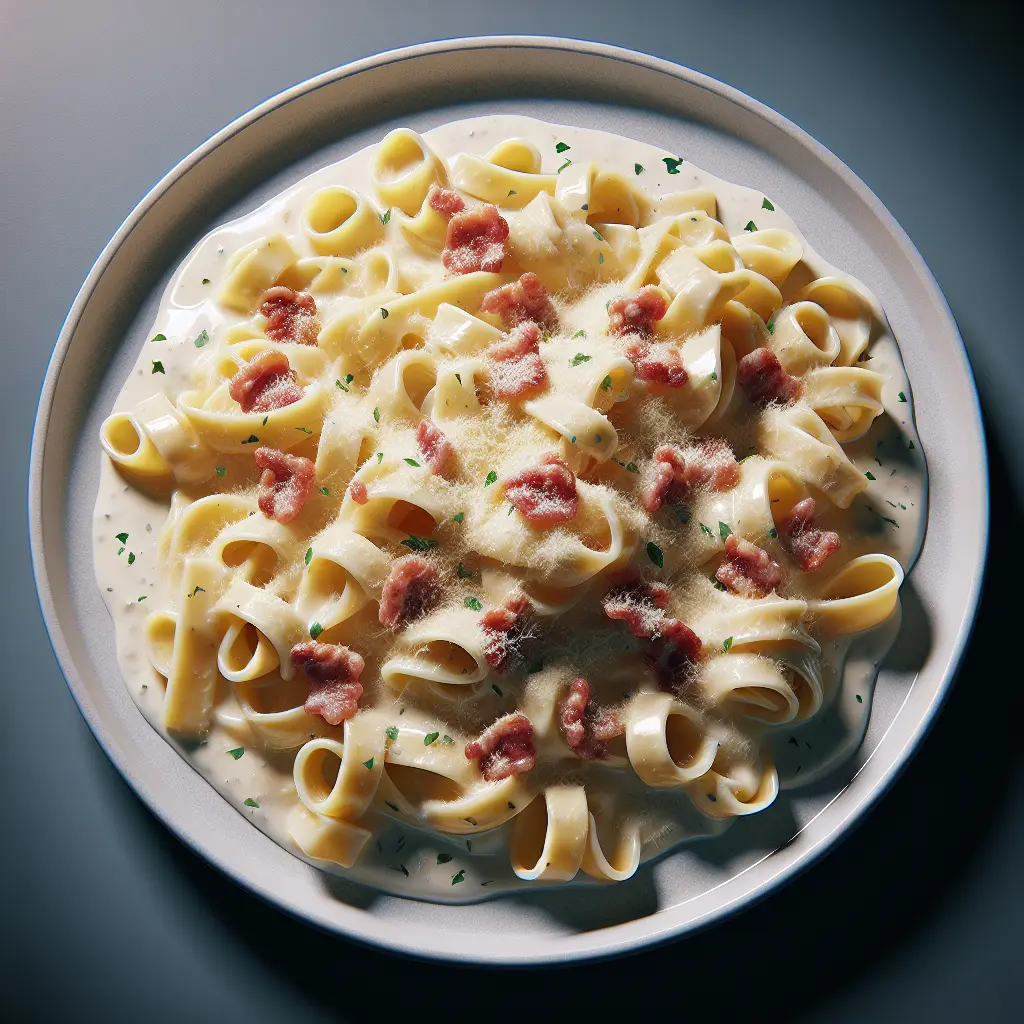Carbonara: A Timeless Italian Classic
Carbonara, a celebrated Italian pasta dish, has captivated food enthusiasts and gourmands worldwide. Originating in Rome, carbonara's origins are believed to date back to the 19th century. The name "carbonara" is derived from the Italian word "carbonaro," meaning "charcoal burner." Some speculate that the dish was named after the charcoal burners who frequented the trattorias of Rome, where the hearty and flavorful carbonara was a popular choice.
The traditional carbonara is characterized by its simple yet絶妙なingredient list: spaghetti, guanciale (cured pork cheek), Pecorino Romano cheese, eggs, and black pepper. The dish's essence lies in the skillful combination of these ingredients, resulting in a harmonious symphony of flavors. The guanciale imparts a deep, salty umami, while the Pecorino Romano adds a nutty, slightly tangy flavor. The eggs provide a velvety richness, and the black pepper adds a subtle kick that complements the other flavors perfectly.
Variations on a Classic
While the traditional carbonara recipe remains a culinary masterpiece, variations have emerged over time, reflecting regional preferences and culinary creativity.
- Carbonara with Pancetta: A popular variation replaces guanciale with pancetta, an equally flavorful but more widely available cured pork product. Pancetta's slightly smokier flavor adds a distinct twist to the classic carbonara.
- Carbonara with Cream: A more modern interpretation incorporates cream into the sauce, resulting in a creamier, milder version of the traditional dish. This variation appeals to those who prefer a less salty and savory profile.
- Carbonara with Peas: Peas add a vibrant pop of color and a subtle sweetness to the carbonara. This variation is particularly popular in spring and summer, when fresh peas are at their peak.
Achieving the Perfect Carbonara
Creating the perfect carbonara at home requires careful attention to technique and a few key tips:
- Use high-quality ingredients: The quality of the ingredients used will significantly impact the final result. Opt for guanciale or pancetta with deep, rich flavors, and use freshly grated Pecorino Romano cheese.
- Don't overcook the eggs: The eggs should be cooked gently, just enough to thicken the sauce without curdling. Remove the pan from the heat before adding the eggs and stir vigorously to ensure even cooking.
- Add the pasta water: A splash of pasta water helps emulsify the sauce, creating a smooth and creamy consistency.
- Season to taste: Black pepper is a crucial element in carbonara, so season generously to your preference. Additional salt may be necessary, depending on the saltiness of the guanciale or pancetta.
Conclusion
Carbonara, with its rich and flavorful sauce, is a testament to the culinary genius of Italy. Whether you savor the traditional version or explore its variations, this classic dish is sure to tantalize your taste buds and leave you craving more.
How many calories are in Carbonara?
Each 1 plate of Carbonara contains 1018 calories.
Carbonara Nutritional Information
| Nutrient | Amount per 1 plate (512g) |
|---|---|
| Calories | 1018 Calories |
| Protein | 44g |
| Fat | 33g |
| Saturated Fat | 11g |
| Cholesterol | 0.186mg |
| Carbohydrates | 133g |
| Dietary Fiber | 7.5g |
| Sugar | 2.5g |
| Sodium | 0.965mg |
| Potassium | 0.3862mg |
| Calcium | 0.383mg |
| Iron | 0.0063mg |
